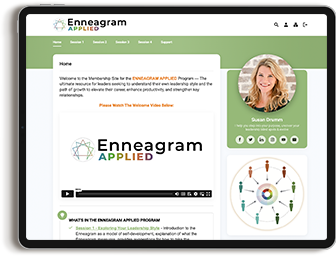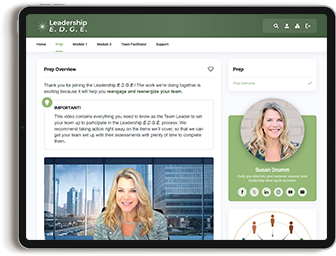The Art of Keeping Talent: Strategies for Retaining Your Best Employees (feat. Mike Harbour)
Talent retention is not just a strategy, it’s a mindset.
It’s a mindset because it requires a shift in the way that organizations approach the management of their employees.
As outlined in a recent article on Fast Company, “Anticipating that workers will stay in their current positions for a longer period of time just because of economic uncertainty may have been an accurate approach a few years ago, but it is not necessarily the right approach today. Employers need to focus less on getting the best out of their employees and instead on enabling and inspiring them to give their best. “
Joining me today on The Enlightened Executive podcast is Mike Harbour, a former military veteran turned successful business owner, whose mission is to deliver excellence in leadership and personal development solutions. Mike leverages his experiences as a medical service corps officer in the U.S. Army, along with almost 30 years of leadership experience in the healthcare industry as a leader in hospital operations, leadership training and development, sales, talent management, and executive search.
From harnessing employee potential to systematizing development, in this episode, Mike outlines 3 essential strategies for keeping top performers engaged and committed to the company’s mission.
3 Talent Retention Strategies:
Retention strategies are designed to help organizations keep their employees engaged, motivated, and satisfied with their work. Here are some key retention strategies that are often overlooked:
- Values in action – You’ve clearly defined company values, but have you translated that into expected behaviors? Use your 1:1 time to highlight where your employees are modeling or falling out of alignment with your core values and explain behaviors you expect that translate from these values.
- Create a specific development plan – A development plan should be co-created. Meaning, what’s the development you would most like to see and what areas of development are inspiring to your employee as well? Have them document this and systematize it. How will they make progress along this plan, and what additional education is needed? Then plan quarterly check-ins to discuss progress.
- Foster a feedback-rich environment – All too often, leaders wait to give feedback until review time. I can’t tell you how many times I’ve heard from employees “well I wish I would have known this earlier in the year when I could have done something about it!” This leaves employees feeling frustrated and disheartened. Instead, carve out time weekly, or at least monthly, to review past activities with an eye towards what you want to see more of and less of in the future. Also, ask for their feedback as well, with questions such as “how can I more effectively delegate to you?” and “where can I support you better?”
Why should you systematize development?
Systematizing development is an effective way to create a culture of learning and development, improve efficiency, align employee development with business goals, and retain top talent.
Companies should be helping their employees build the skills and knowledge they need to excel in their roles, while also preparing them for future opportunities within the organization. This approach can help companies identify skill gaps and development needs across the organization and ensure that all employees have access to the resources they need to succeed.
Mike explains how leaders are often focused on climbing the ladder and bettering themselves and expect that everyone else should do the same. However, he believes that 80% of people aren’t self-motivated or self-aware enough to develop themselves, or to know what skills to develop. Sending someone to a seminar once a year will not create change. Growth is ongoing and needs to be constantly built into work processes in order to create change.
Common Mistakes Leaders Make When It Comes To Talent Retention:
Mike strongly believes that leaders who fail to communicate effectively, neglect employee development, or offer inadequate compensation and benefits, are likely to struggle with retaining their top talent. Here are some common mistakes that he’s observed leaders make:
- Spending money on hiring new employees instead of actively looking for ways to develop current talent.
- Seeing people as expendable and not seeing them as having value and potential that needs to be developed.
- Investing in new buildings and equipment but neglecting to develop people.
Mike also shares…
- The importance of holding people accountable to the behaviors of company values over the results that they deliver.
- How he overcame childhood obstacles that impacted his leadership – for good and for bad.
- The true reasons people decide to stay or leave a company.
If you liked this episode, you may also benefit from hearing:




